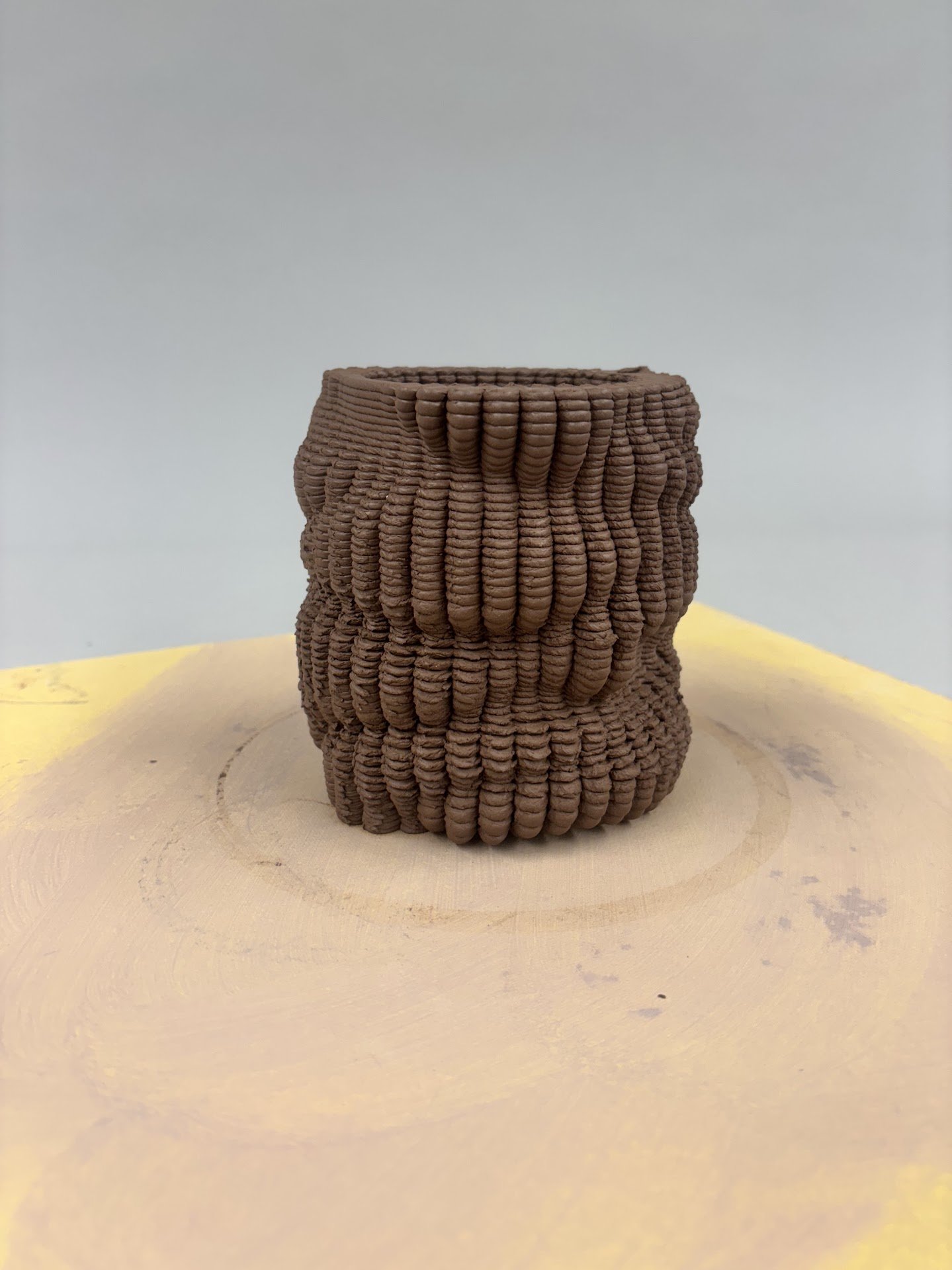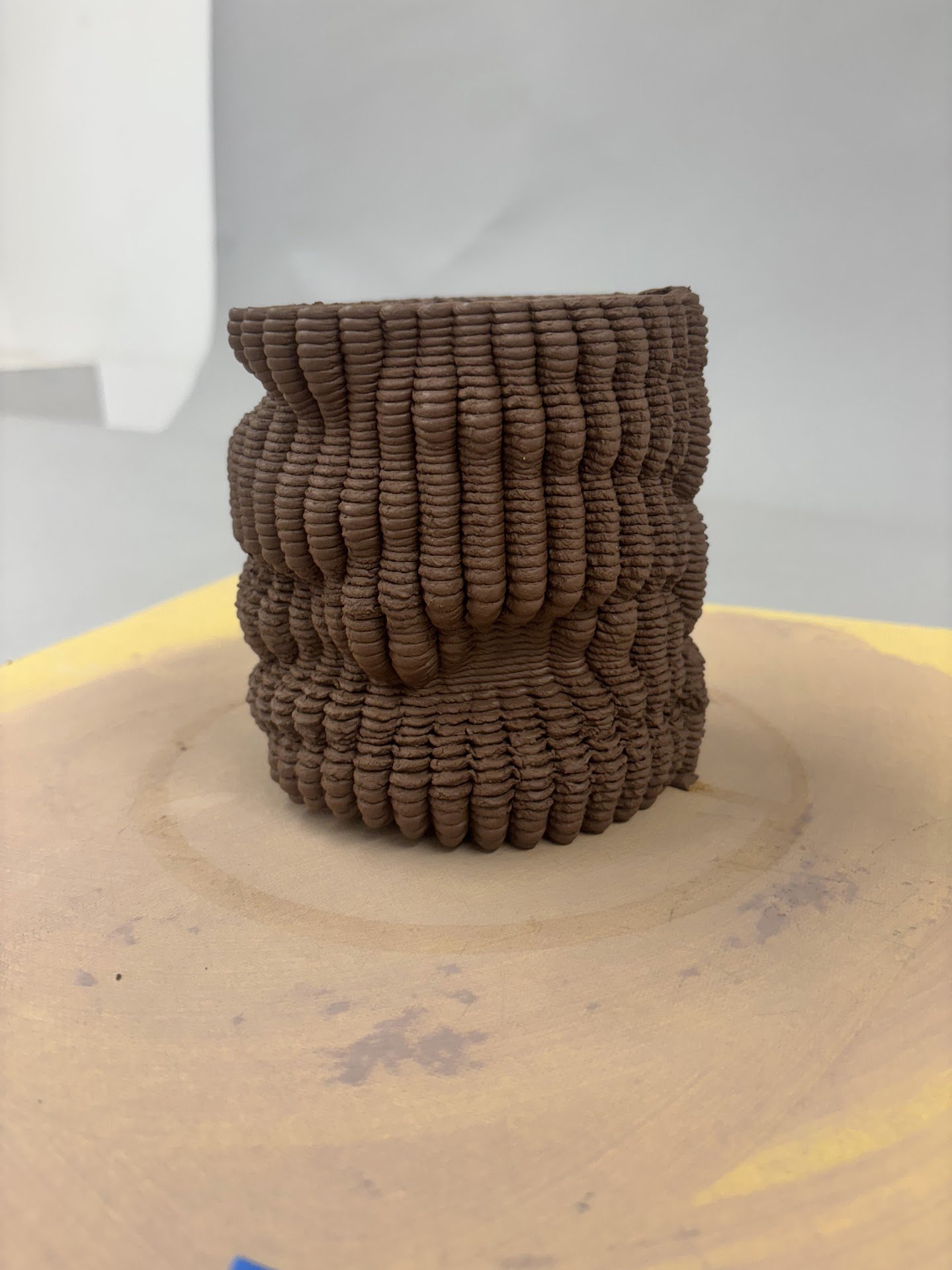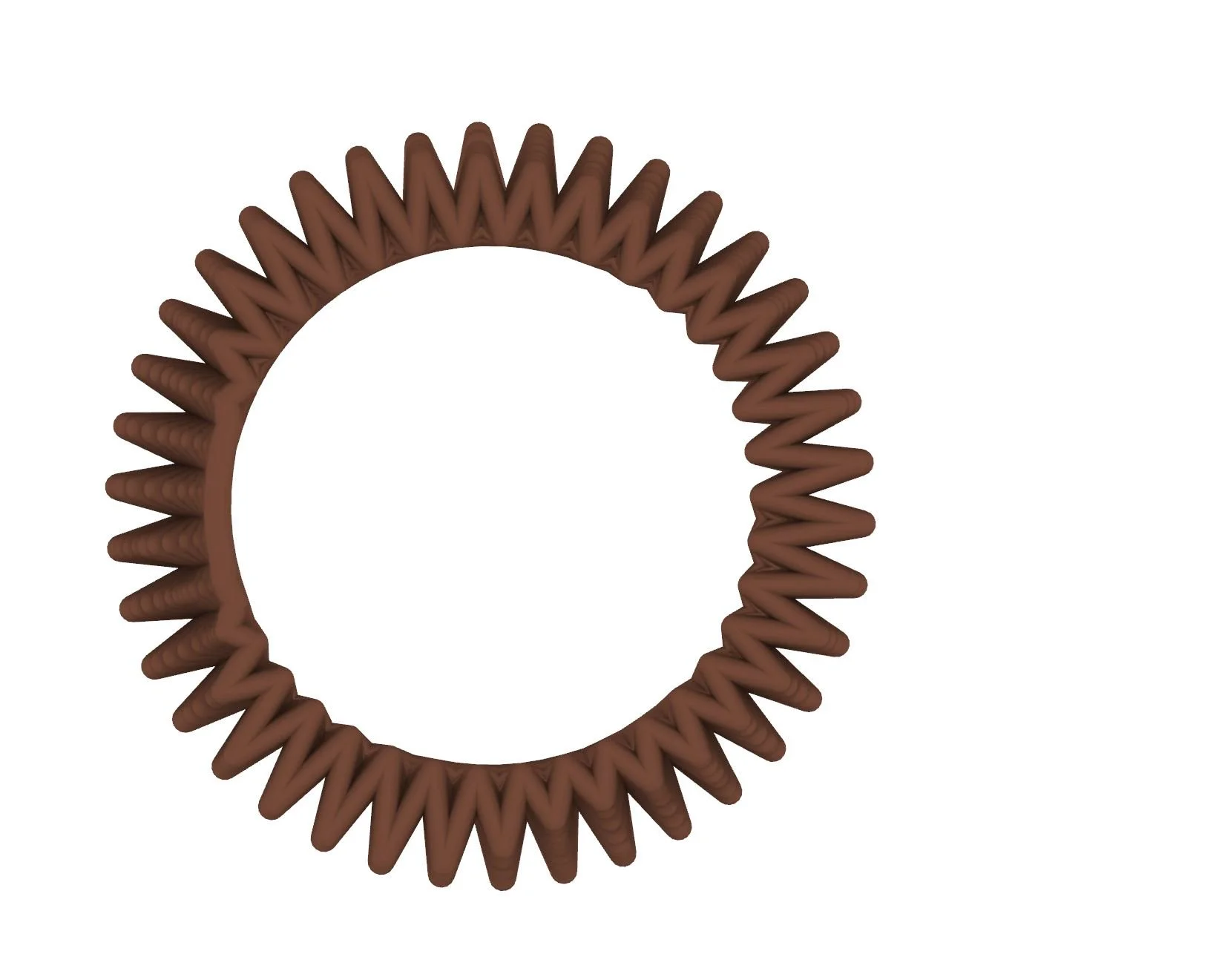
Ecological Tectonics
Making kin
Precedent study
I am currently taking Adam Marcus’ research studio titled Ecological Tectonics, focusing on symbiotic relationships between the built environment created by humans and the natural environment maintained by pollinators and wildlife. Combining Grasshopper G-code to create toolpaths for the Potterbot with a focus on wildlife, this studio aims to develop ecological facade systems using ceramics.
Making Kin was an initial study into pollinators. I focused on the Blue Jay because they are known to pollinate through acorn dispersion in the South. This assignment involved creating a section perspective drawing of a Blue Jay’s habitat, exploring its domestic space through architectural representation. Research into the species’ behaviors, lifecycle, and ecosystem informed the design, with a focus on linework and hatching to convey depth and materiality.
Campos Costa Arquitectos’ Lisbon Aquarium Extension (2013) served as the architectural ceramic precedent. CCA utilizes the slip-cast method to create these fish-scale tiles. The tiles are connected with clips and fastened to the structure, acting as a rain screen.
Spring 2025 - Studio 4042 - Tulane University
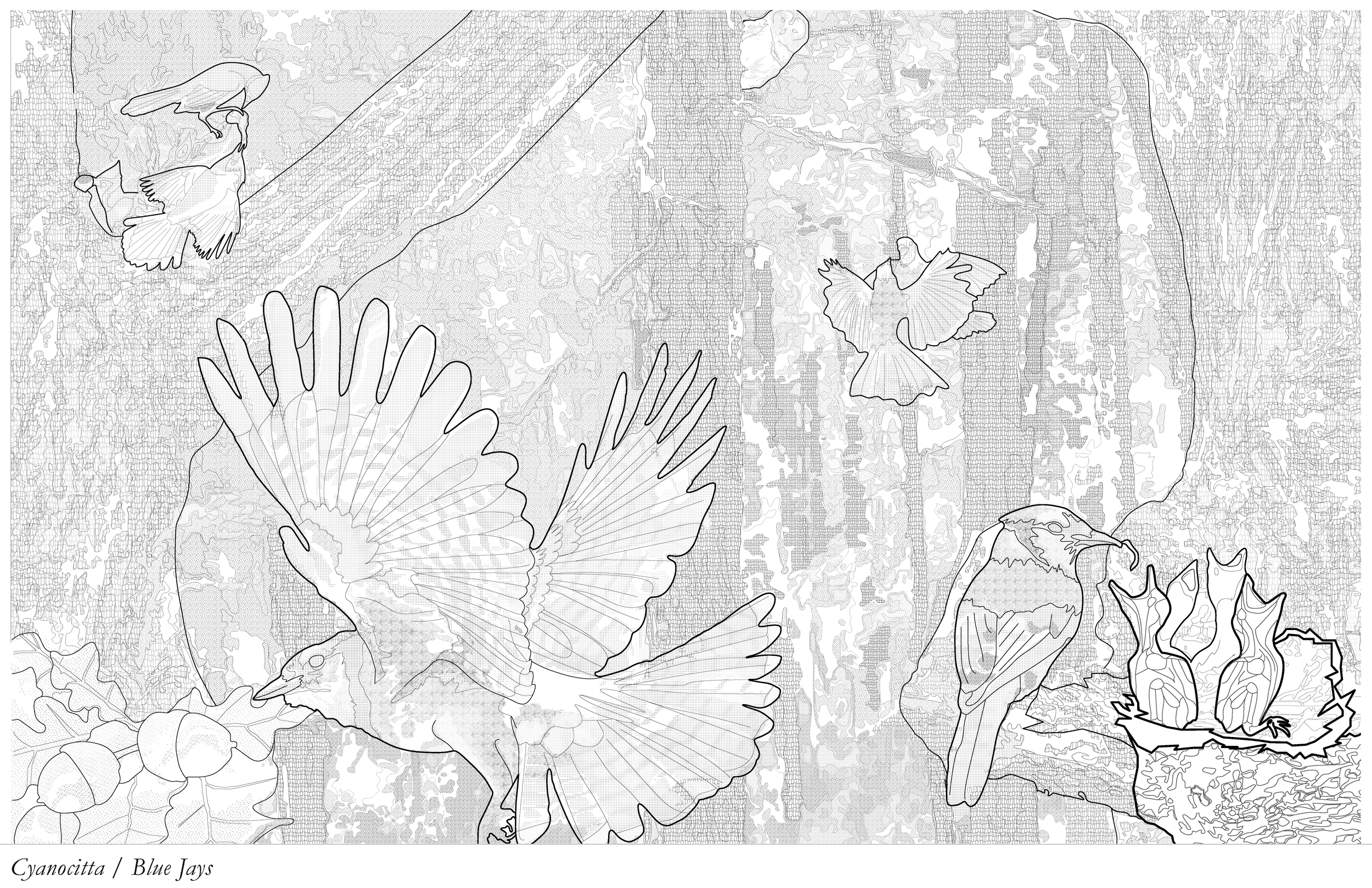
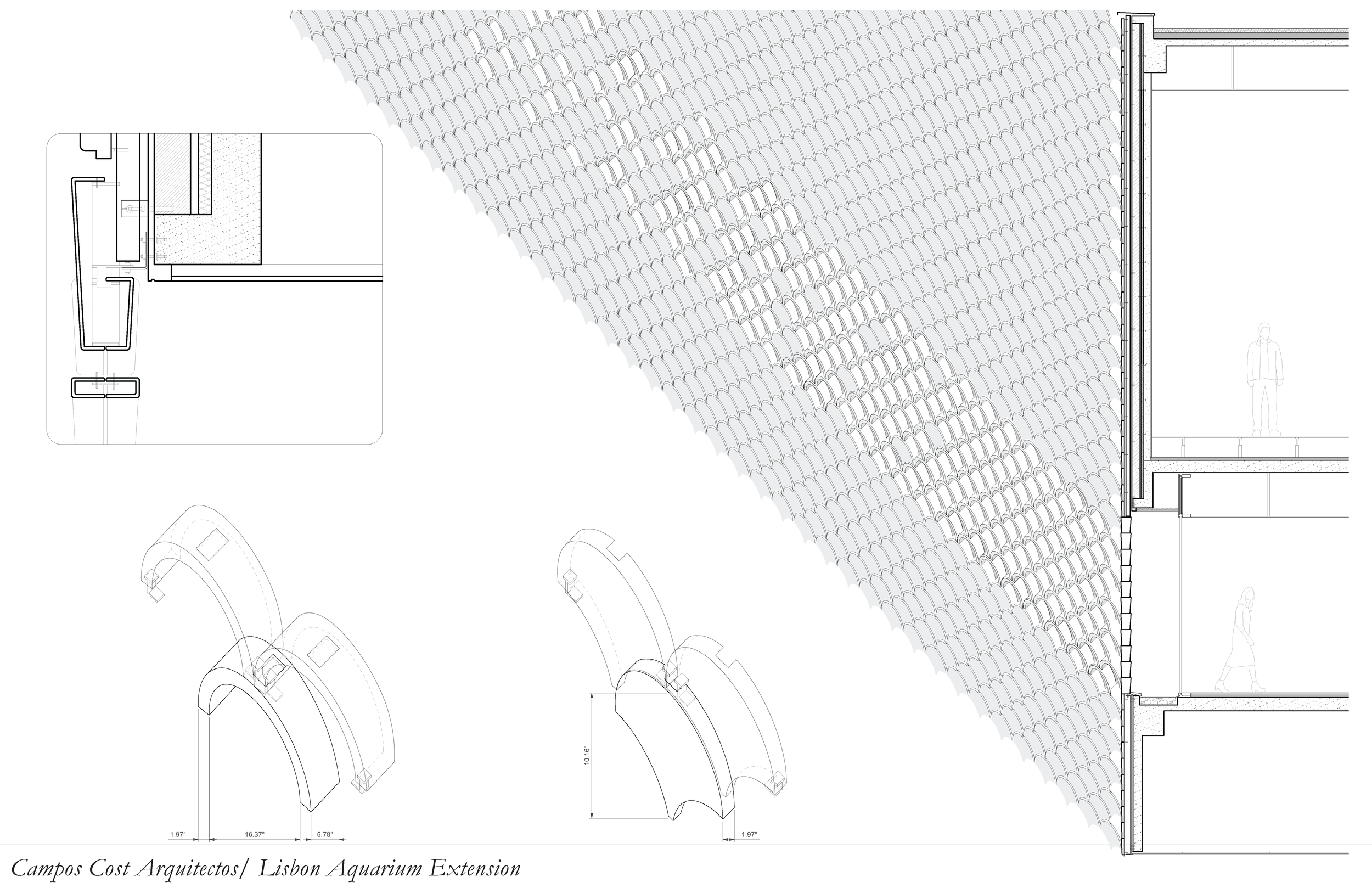
g-code textures
Currently in studio, we are getting familiar with G-code. Part A was to code a parametric texture around a given cylinder, then use the Potterbot to 3D print the G-code texture. In Part B of this assignment, From Toolpath to Tile, we will use the same techniques to create a tile.
